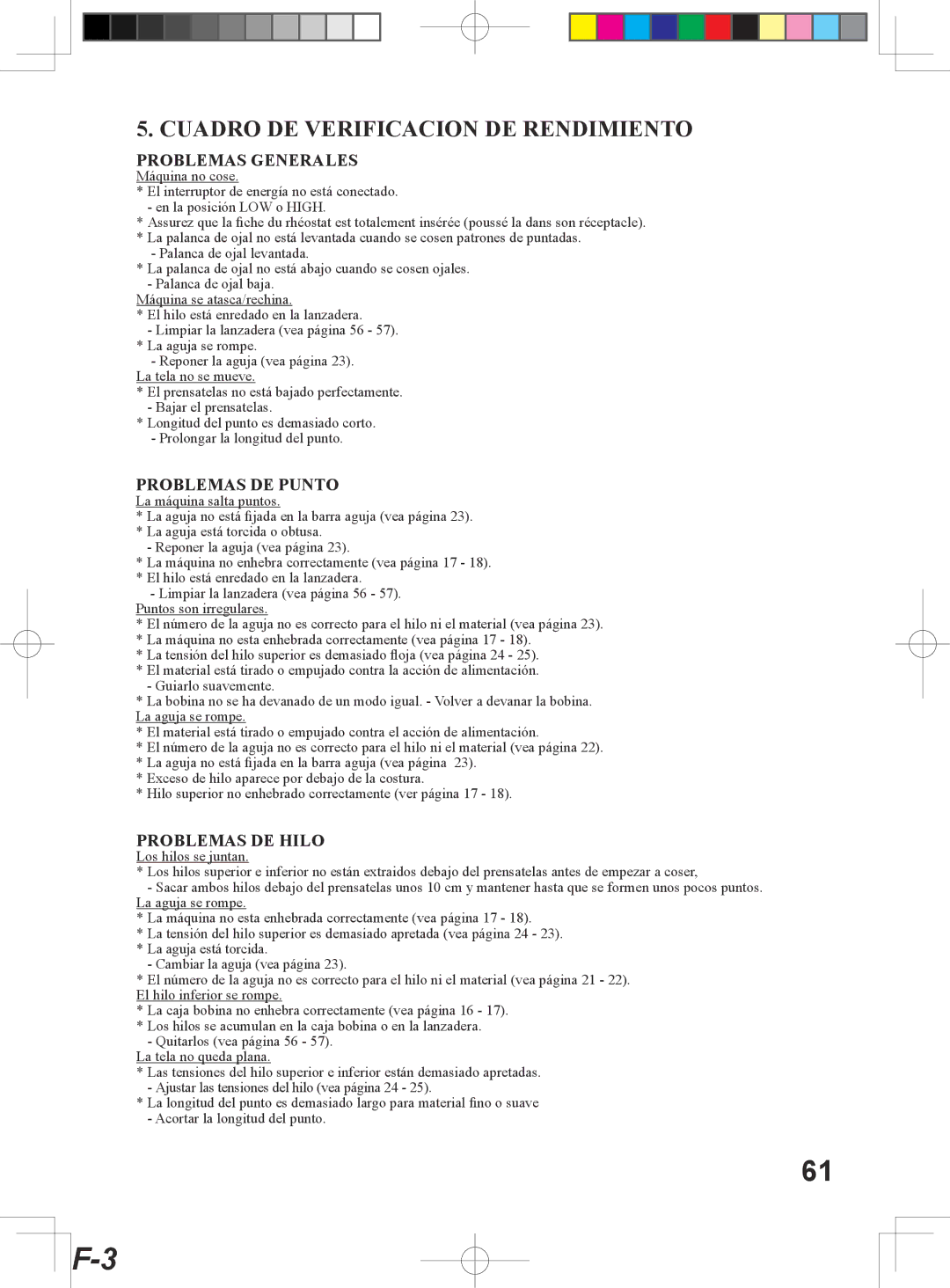5400 specifications
The Singer 5400, a powerful and versatile sewing machine, combines modern technology with the timeless craftsmanship the Singer brand is known for. This model is designed for both beginners and experienced sewists, making it an ideal addition to any home sewing studio.One of the standout features of the Singer 5400 is its user-friendly interface. It comes equipped with an LCD screen that displays stitch selection and settings clearly, allowing users to navigate with ease. The machine offers a variety of built-in stitches, including utility, decorative, and quilting stitches, providing countless options for creative projects. With a selection of over 100 stitches, the Singer 5400 allows you to customize your sewing experience, tailoring each project to your unique style.
The Singer 5400 also incorporates advanced sewing technologies. The automatic needle threader simplifies the threading process, ensuring that even novice users can get started quickly. Additionally, the drop-in bobbin feature enhances efficiency, allowing for easy winding and insertion. The machine features adjustable stitch length and width, giving users complete control over their sewing projects.
A notable characteristic of the Singer 5400 is its sturdy construction, which contributes to a smooth sewing experience. The heavy-duty metal frame ensures stability, reducing vibrations and allowing for precision stitching. This durability makes the 5400 suitable for a range of fabrics, from lightweight materials to thicker, more challenging textiles.
For those who enjoy quilting, the Singer 5400 includes a quilting foot and an extension table, providing ample workspace for larger projects. The free arm feature enables easy sewing around cuffs, collars, and other difficult-to-reach areas, making this machine a versatile choice for various sewing tasks.
Another innovative aspect of the Singer 5400 is its speed control, which allows users to adjust sewing speed for greater accuracy, particularly when working on intricate designs. The machine also features a reverse stitch option, enabling easy reinforcement of seams and hems.
Overall, the Singer 5400 is a well-rounded sewing machine that combines advanced technology with user-friendly features. Whether you're working on a simple repair or a complex quilting project, the Singer 5400 delivers reliability and performance, making it a valuable tool for any sewing enthusiast. With its blend of functionality and ease of use, the Singer 5400 is sure to inspire creativity in every sewist.

